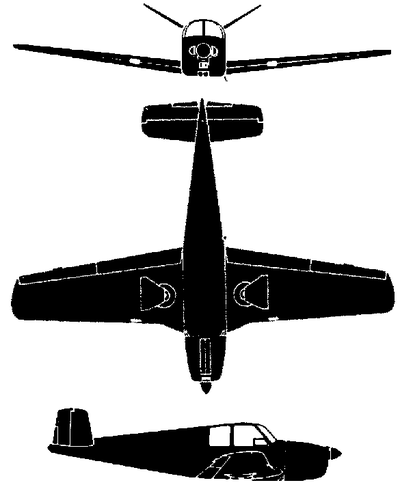Reported Seeing A “Fireball” Or Something On Fire While Airborne Before The Impact
Location: Clearwater, FL Accident Number: ERA24FA104
Date & Time: February 1, 2024, 19:07 Local Registration: N6659L
Aircraft: Beech V35 Injuries: 3 Fatal, 1 Minor
Flight Conducted Under: Part 91: General aviation - Personal

On February 1, 2024, about 1907 eastern standard time, a Beech V35B, N6659L, was destroyed when it impacted two residences and the ground near Clearwater, Florida. The commercial pilot was fatally injured. Additionally, two occupants of one residence were fatally injured, and one occupant of a second residence sustained minor injuries. The airplane was operated as a Title 14?Code of Federal Regulations Part 91 personal flight.
According to Federal Aviation Administration (FAA) Automatic Dependent Surveillance – Broadcast (ADS-B) data and preliminary air traffic control radar and audio information, the flight departed about 1809 from Vero Beach Municipal Airport (VRB), Vero Beach, Florida, on an instrument flight rules (IFR) flight plan destined for Clearwater Air Park (CLW), Clearwater, Florida. About 1900, when the flight was about 4.1 nautical miles east-southeast from the runway 34 displaced threshold at CLW, the pilot cancelled the IFR clearance. The pilot was advised by air traffic control that radar services were terminated, and he proceeded under visual flight rules (VFR).
According to two individuals who were at CLW, the pilot broadcast on the common traffic advisory frequency (CTAF) that he could not find the airport and asked them to turn on the runway lights which were already on from an airplane that had just landed. They also stated that after the pilot requested a second time to turn the runway lights on, the pilot-controlled runway lighting was changed to the highest intensity. Both individuals then heard the pilot announce he had a “fire.” The airplane’s location at that time was not determined, and the CTAF was not recorded.

While flying VFR, the flight proceeded west of CLW then turned to a northwesterly heading nearly parallel to runway 34. The flight continued on the northwesterly heading north of CLW, then at 1903:46, the pilot turned left and proceeded on a southeasterly heading. At 1905:15, the airplane was west of CLW 1,100 ft msl, when a 7700 transponder code was displayed on the controller’s scope. At 1905:47, while flying at 1,300 ft msl, the pilot stated, “nine five lima” and, “coming to Albert Whitted I can’t see the other airport.” The controller advised the pilot that the flight was 1 mile south of CLW and asked if he could turn to heading 180° and to maintain the present altitude. At 1906:15, the pilot advised the controller, “i’m losing engine” to which the controller asked the pilot if he could see the St Pete-Clearwater International Airport (PIE), St Petersburg-Clearwater, Florida, that was 3 miles ahead of his position. The controller also
advised the pilot that runways 18/36 were available at PIE. There were no further transmissions from the pilot.
A pilot flying nearby reported seeing the accident airplane in a 30° to 40° nose-low descent that he described as, “like an uncontrolled descent.” He added that while the airplane was descending, he saw a “very bright light” descending very fast to impact. Another witness who was a passenger in a car northwest of the accident site reported seeing the accident airplane flying ahead of their position from the right to the left, or west to east. She said she did not hear any sound and reported seeing a “fireball” or something on fire while airborne before the impact. She did not identify the object as an airplane at that time. She described the fire as a round fireball with a white cone in the front portion.
The pilot who was flying nearby observed the impact and reported it to air traffic control. Multiple videos from commercial businesses west of the accident site depicted a light descending steeply with sounds associated with engine operation, followed by a fireball. The videos were provided to the NTSB Vehicle Recorders Laboratory for further review. The remains of the extensively heat damaged and impact fragmented wreckage was secured for further examination.
 ANN's Daily Aero-Term (05.09.24): Hold Procedure
ANN's Daily Aero-Term (05.09.24): Hold Procedure ANN's Daily Aero-Term (05.06.24): Altitude Readout
ANN's Daily Aero-Term (05.06.24): Altitude Readout ANN's Daily Aero-Linx (05.06.24)
ANN's Daily Aero-Linx (05.06.24) Airborne-NextGen 05.07.24: AI-Piloted F-16, AgEagle, 1st 2 WorldView Sats
Airborne-NextGen 05.07.24: AI-Piloted F-16, AgEagle, 1st 2 WorldView Sats Aero-News: Quote of the Day (05.07.24)
Aero-News: Quote of the Day (05.07.24)




